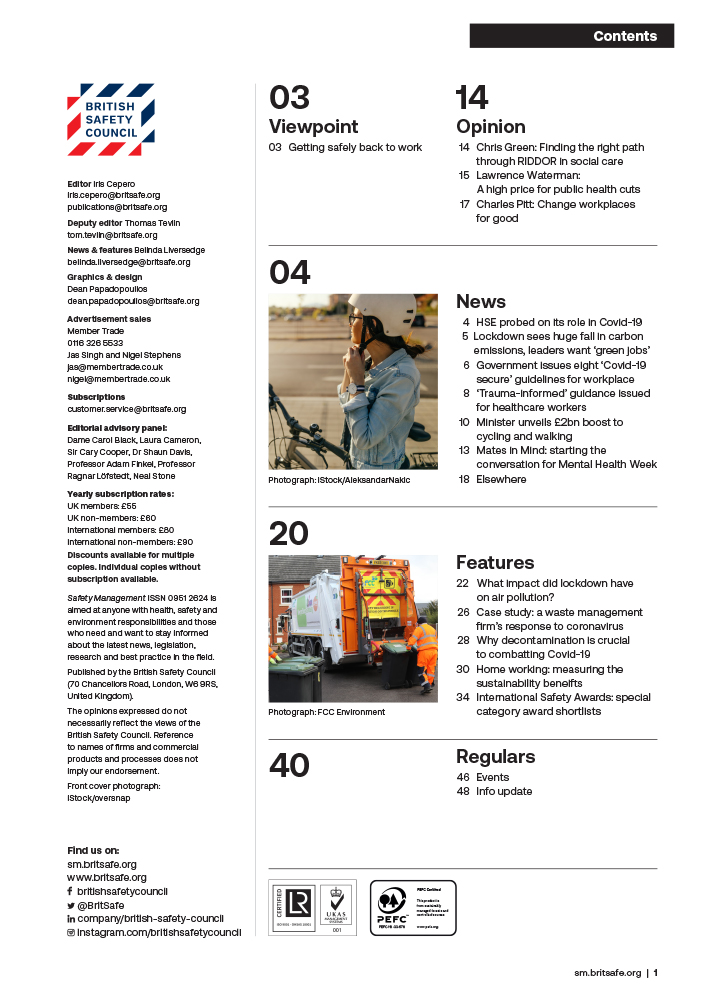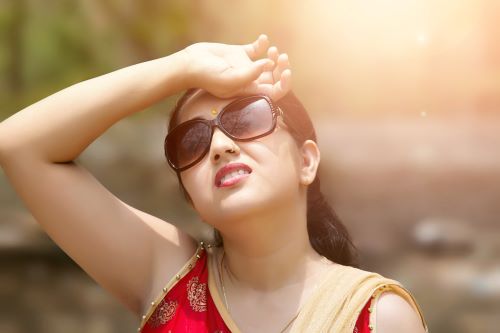The central government recently announced that community health support workers are to be granted basic healthcare cover, but commentators say the entire social security system for people in all forms of low-paid and precarious employment needs a major overhaul to ensure adequate healthcare and social security protections for all.
Features
India’s Budget for 2024-25: small steps towards social security benefits for workers
During her Interim Budget speech on 1 February, the Union Minister of Finance Nirmala Sitharaman announced various social welfare schemes aimed at targeting help to the poor, women, young people and farmers. She emphasised how the central government was adopting inclusive growth strategies to tackle inequality, with a focus on the ‘Garib’ (poor), ‘Mahilayen’ (women), ‘Yuva’ (youth) and ‘Annadata’ (farmers).
A crucial aspect of achieving ‘Viksit Bharat:2047’ (or ‘Developed India’, the Modi government’s action plan to transform India into a developed country by 2047), is strengthening these four pillars so these four marginalised groups are able to achieve a better quality of life.
In a major development, the minister announced that Accredited Social Health Activists (ASHAs), Anganwadi workers and related community healthcare helpers are set to benefit from healthcare coverage under the Ayushman Bharat Pradhan Mantri Jan Arogya Yojana (AB-PMJAY), a government-funded scheme that provides free basic health insurance cover for low income earners.
Experts welcomed the news, stating that extending healthcare cover to these workers is a huge step towards recognising the invaluable service they have provided for almost five decades, and the move recognises them as workers and not just honorary volunteers from the community.

Photograph: iStock, credit Sumit Saraswat
Extended healthcare coverage
Kamal Parulekar, general secretary of the Anganwadi Sevika Union in Maharashtra, said she was pleased the interim budget had taken account of the health concerns of these types of workers. It is estimated the move will result in healthcare coverage being granted to approximately one million ASHA workers, 1.3 million Anganwadi workers and 1.2 million community healthcare helpers in India.
The workers will be eligible for financial assistance of up to Rs 5 lakh per family annually to meet the cost of secondary and tertiary medical care in the event of the worker or their family members requiring hospital treatment or specialist medical care.
ASHAs are community-based female health workers who aim to improve the health of the rural poor by connecting them to locally available public healthcare services. They also educate villagers about important health issues – such as disease prevention, good nutrition and correct sanitation practices – and work to improve female, neonatal and reproductive health and hygiene – for example, by encouraging women to give birth in hospitals, providing ante- and post-natal care, and ensuring children are immunised against vaccine-preventable diseases.
Anganwadi workers, meanwhile, provide basic childcare and related health services in impoverished villages. This include the provision of supplementary food to young children and new and expectant mothers, education activities for pre-school children, nutritional education for parents of young children and health checks for young children and their parents.
ASHAs and Anganwadi workers therefore play a crucial role in screening and supporting the health of nursing mothers, pregnant women and infants and children up to the age of six.
“However, these workers (ASHAs, Angawadis and community healthcare helpers) have no access to proper nutrition, and this leaves them more susceptible to infections from those they screen,” said Kamal Parulekar from the Anganwadi Sevika Union in Maharashtra.
“As they are not entitled to medical leave, these workers often spend money seeking treatment in private hospitals as they cannot afford to wait in long queues at government-run hospitals.”
Additional social security benefits
Parulekar pointed out that extending the scope of the Ayushman Bharat public health insurance scheme to provide free basic health insurance cover for ASHAs and Angawadis is a step in the right direction, and is hopefully the first move towards granting these workers additional social security benefits and legal rights in the future.
As general secretary of the Anganwadi Sevika Union in Maharashtra, she also recently wrote to the Maharashtra state government calling on ministers to grant paid medical leave to the state’s Anganwadi workers.
However, an Anganwadi worker in Khunti, Jharkhand, said that the Union Budget falls short, and fails to satisfy the demands of Anganwadi workers and other community health helpers across various states for better wages.
“The interim budget missed the opportunity to address the urgent issues, such as lack of quality meals provided at Anganwadi centres, higher wages for workers and inadequate infrastructure,” said Happy Pant, policy engagement lead and Amita Yadav, policy analyst at the Centre for Budget and Governance Accountability (CBGA), a think-tank focusing on public policies and government finances in India.
“Given these pressing demands, it is hoped that the full budget for 2024–25 to be presented in July will take measures to adequately address these concerns.”
Poor pay and conditions
The pay and working conditions of ASHAs, meanwhile, have long been criticised by the ASHAs themselves and the unions representing them. For instance, ASHAs are classed as volunteers, rather than employees, and instead of wages are generally paid on an incentive-basis.
For example, ASHAs are paid for ensuring a woman gives birth in hospital or ensuring a child receives a full programme of immunization against vaccine-preventable diseases. And although states are allowed to pay a small, fixed monthly basic salary to ASHAs, campaigners say that the typical monthly income of an ASHA is far less than the minimum wage.
As a result, for years, ASHAs – led by their trade unions – have been demanding that their employment status should be formalised and regulated to ensure they receive minimum wages and social security coverage and benefits, such as pensions.
Meanwhile, the central government’s decision in the interim budget to increase the financial allocation towards the Mahatma Gandhi National Rural Employment Guarantee Scheme (MGNREGS), from an estimated Rs 60,000 crore in 2023–24 to Rs 86,000 crore in 2024–25, was welcomed by commentators.
Further funding for the MGREGS scheme, which is the main source of temporary social employment and a social security net for many people, will make it easier for women and marginalised people to obtain periods of paid work, say experts.
MGNREGS aims to enhance the livelihoods of people in rural areas by providing at least 100 days of paid employment in a financial year to at least one member of every household whose adult members volunteer to do unskilled manual work, with women guaranteed one third of the available jobs.
Multiple social security schemes
Meanwhile, an independent study of the existing social security schemes for workers in the unorganised sector, published at the same time as the interim budget for 2024–25, found that while there are multiple social security schemes, the actual amount of money allocated to them by the government, and the effectiveness of the various schemes in providing social security benefits for workers in the unorganised sector, is unclear.
“There is a lack of clarity and transparency in budgets meant for the unorganised sector workers,” stated CBGA. “This makes it difficult to truly assess the impact and effectiveness of the existing social security measures in addressing the needs of the unorganised sector.”
In her budget speech, Sitharaman also highlighted the positive contribution of the PM–SVANidhi government-backed scheme in supporting the livelihoods of street vendors affected by the pandemic.
Launched in 2020, PM–SVANidhi provides affordable, collateral-free working capital loans to street vendors to help them resume their livelihoods after the pandemic and become self-reliant.
According to Sitharaman, so far the scheme has provided credit assistance to 78 lakh street vendors.
The Union Minister of Finance also highlighted how the PM Mudra Yojana – a government scheme which offers loans of up to Rs. 10 lakhs to micro-enterprises, like small manufacturing units, shops and food processing units – had issued 43 crore loans totalling Rs 22.5 lakh crore to support the entrepreneurial efforts of younger people.
Responding to the various announcements for additional funding for social security schemes and loans to support people running small businesses, the CBGA said: “While all these announcements are positive, adequate budgetary outlays towards schemes that broadly or exclusively address the issues of the unorganised sector are necessary to ensure social protection for the unorganised sector workers.”
According to a report published in summer 2022 by the central government’s own think tank, NITI Aayog, India’s gig workforce is expected to expand to 23.5 million workers by the year 2029–30, which is nearly a 200 per cent jump from the current 7.7 million.
“The rapidly burgeoning gig workforce is ushering in a new economic revolution globally,” stated the report, India’s Booming Gig and Platform Economy. “India – with its demographic dividend of half-a-billion labour force and the world’s youngest population, rapid urbanisation, widespread adoption of smartphones and associated technology – is the new frontier of this revolution.”
Although there is significant anticipation that various welfare measures for gig workers could be introduced this year, experts say that a proactive regulatory framework is essential to sustain the burgeoning digital economy and ensure the welfare of online platform-based workers.
Problems for gig economy workers
According to the NITI Aayog report, people engaged in the gig or platform economy face problems with access to internet services and digital technology, a lack of job security, irregular wages and uncertain employment status.
Various commentators have also warned that gig workers – who include people for work on an informal, ad-hoc basis for mobile app-based ‘platform’ businesses like food delivery, taxi and home cleaning firms – face challenges such as income instability, unpredictable hours and the absence of crucial benefits, such as health insurance, retirement plans and paid leave.
Anand Ramanathan, a partner at Deloitte who specialises in consumer industries, said that, given the ever-increasing number of gig workers in metro and tier–1 markets where e-commerce and hyper-local deliveries have expanded, the Indian government needs to acknowledge the gig workforce as a formal workforce under labour laws in the full 2024 Budget later this year.
Commentators say it is also essential that the government and policy-makers take account of the fact many gig workers in India are actually migrant workers, who have travelled from their home states in search of work. This means they face multi-faceted challenges in several areas, such as access to technology, social security, education, fundamental workers’ rights, legal aid and healthcare.
As a result, many commentators argue that the gig workforce needs to be regulated in India, as over one million people are expected to join this section of the workforce in the next decade.
Anshul Khurana, an entrepreneur and co-founder of Entitled Solutions, an online platform that works with employers to help low-income workers access financial, health and government benefits, such as low cost insurance cover, said the growing number of gig workers in India means there is an urgent need for a new regulatory framework covering their pay, conditions and employment benefits.
Decent working conditions
Commentators say that, at the very least, regulations should be introduced to ensure decent working conditions and to support the wellbeing of India’s gig workforce, which has the potential to contribute an incremental 1.25 per cent (approximately) to India’s GDP over the long term.
Meanwhile, in his second budget as head of the Karnataka government, the state’s chief minister Siddaramiah announced plans to fund an insurance scheme for the state’s platform-based gig workers.
Gig workers currently receive almost no social security benefits, but the proposed Karnataka scheme will mean the state’s gig economy workers will receive free life and accidental insurance cover worth Rs 4 lakh in total, with the entire cost of the insurance premiums being met by the Congress-led state government.
It is estimated the scheme will provide insurance benefits to around 200,000 gig workers in Karnataka, and the state is proposing to levy a 1–2 per cent ‘cess’ (surcharge) on transactions on online platforms, like food delivery and taxi apps, to fund the scheme.
Second state to propose social security benefits for gig workers
Karnataka is in fact the second state in the country to draft a Gig and Platform Workers’ Bill aimed at providing social security benefits to gig workers.
In summer 2023, Rajasthan introduced a draft Platform Based Gig Workers (Registration and Welfare) Bill, that will establish a dedicated social security fund for the state’s platform-based gig workers.
According to the Congress-Party led Rajasthan government, once the bill is enacted, gig workers will be entitled to basic accident and health insurance, maternity benefits, pension contributions, employees provident fund (EPF), employees; state insurance (ESIC) and scholarships. As with the proposals in Karnataka, the Rajasthan Bill also proposes levying a tax on customer transactions on digital platforms, expected to be between 1–2 per cent, to fund the new welfare schemes.
Meanwhile, People's Democracy, the weekly newspaper of the Communist Party of India (Marxist), reported that the Centre of Indian Trade Unions (CITU) had strongly condemned the interim budget presented by Sitharaman, describing it as “a collection of falsehoods and representing a desperate push towards privatisation”.
In a statement published by the newspaper, the CITU, said: “The recent ILO (International Labour Organization) report exposes declining real wages globally, including in India, while the UN (United Nations) report on the poverty index ranks India’s performance as the worst in recent times.
“Instead of instilling confidence in people grappling to make ends meet, the interim budget callously mocks the harsh realities faced by the people.”
The CITU also claimed the interim budget was “high on rhetoric and low on substance”. It told the People's Democracy newspaper: “The grand claims made during the budget presentation regarding allocations for various welfare measures are debunked by the unspent and surrendered funds.
“The surrender of Rs 1 lakh crores, allocated to agriculture and farmers’ welfare between 2019–20 to 2022–23, underscores the dubious nature of the BJP government’s claims and the deceit played on the people.”
The CITU added: “The interim budget fails to present any positive measures for workers, peasants and the public; instead, it lays claim to the blueprint for its envisined ‘Vikasit Bharath’ (Developed India) by June 2024, projecting a return to power [for the BJP Party].
“True to its neoliberal policies, the [BJP] government envisions a pro-corporate and pro-rich ‘Vikasit Bharat’ by 2047.”


FEATURES

India’s path to net zero: a work in progress
By Orchie Bandyopadhyay on 08 April 2025
India is implementing a variety of clean energy measures to hit its target of net zero greenhouse gas emissions by 2070, including plans to rapidly scale up the generation of nuclear power. However, climate experts say significant finance will be required from developed countries to phase out coal power, accelerate renewables deployment and expand the national electricity grid.

Too hot to handle: early arrival of heatwaves in India sparks calls for action to protect workers and the public
By Orchie Bandyopadhyay on 08 April 2025
Temperatures in India in February 2025 were the hottest since records began over a century ago, prompting warnings the country needs to urgently step up efforts to protect both workers and the general population from the health risks posed by extreme heat and humidity.

